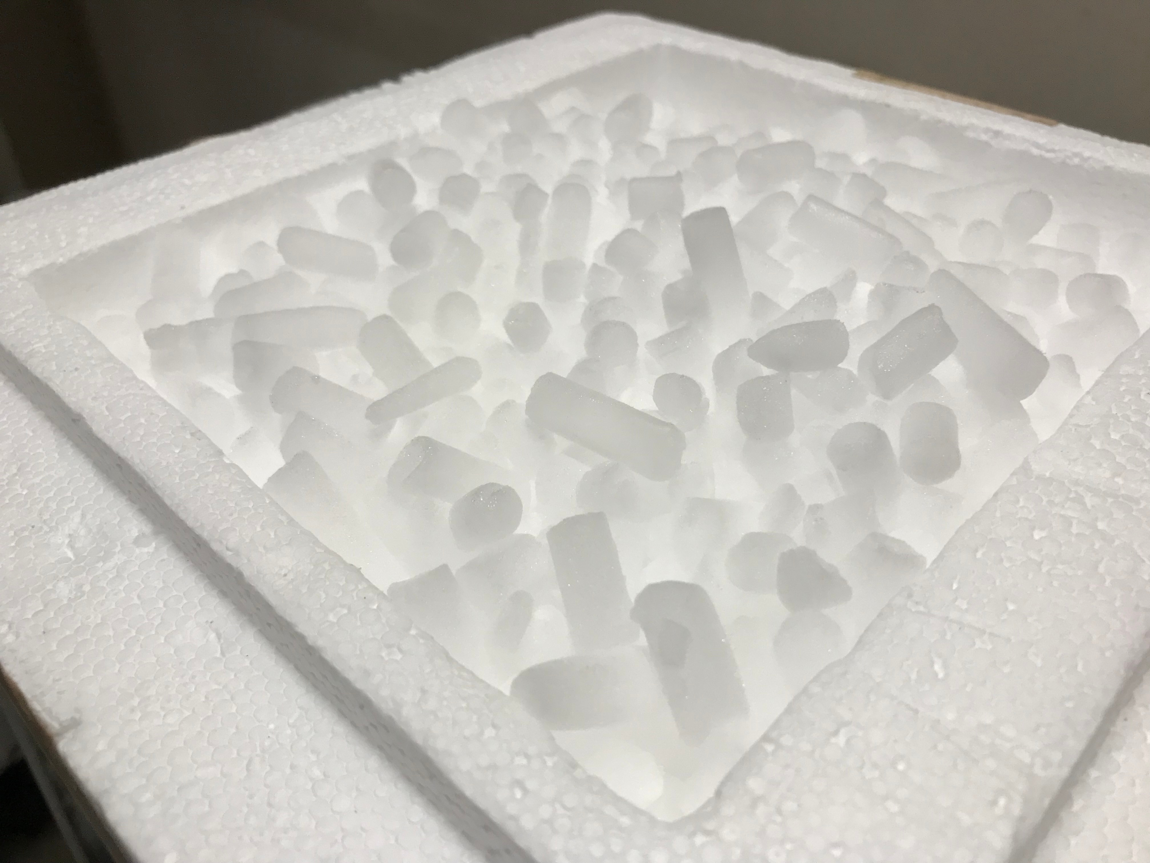Step 1: Choosing the correct packaging for Dry Ice
Dry Ice needs to be shipped in packaging that will allow the release of carbon dioxide gas, whilst preventing a build-up of pressure that might fracture it. An airtight container could cause expansion that can lead to an explosion. The major danger of a sudden release of carbon dioxide like this is that it can be suffocating in a confined space.
The packaging must be able to withstand extremely low temperatures and remain undamaged by Dry Ice. Shipping dry ice requires many layers to ensure that it is shipped correctly. The best material
for this is Styrofoam that is at least 2 inches thick in length, but to attach the important labels for shipping, you will need it to be inside a larger cardboard box.
Food shipments need to be packaged between dry ice blocks inside the insulated container. The best material for the container is polystyrene foam as it is rigid and holds its shape while still protecting the items inside during shipping. The insulated box should then be put inside an outer corrugated cardboard box for extra protection, making sure that the layers are not airtight.
At Swiftpak, we recommend using Polystyrene EPS boxes as they provide excellent thermal performance for temperature sensitive items.

